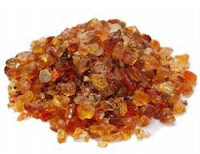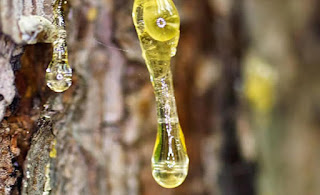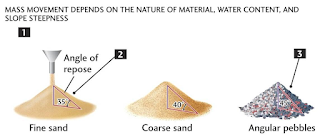Natural Gums: Introduction
Introduction:
- Rational of Natural Gum/products are,
- Biocompatibility, low toxicity, environmental friendliness and low price.
- Natural gums obtained from plants have diverse applications in drug delivery as a,
- Disintegrant, emulsifying agent, suspending agents and as binders.
- Useful in formulating immediate and sustained-release preparation.
- Gums are formed as a natural phenomenon of the plant in which internal plant tissues disintegrate through a process called gummosis. This in turn form cavities, which give out transformed carbohydrates called gums.
- Natural gums (gums obtained from plants) are hydrophilic carbohydrate polymers of high molecular weights.
- Generally composed of monosaccharide units joined by glucocidic bonds.
- They are generally insoluble in oils or organic solvents such as hydrocarbons, ether, or alcohols.
- Gums are either water soluble or absorb water and swell up or disperse in cold water to give a viscous solution or jelly.
- On hydrolysis they yield arabinose, galactose, mannose and glucuronic acid.
- Gums are produced by members of a large number of families
- Few species are Leguminosae, Sterculiaceae and Combretaceae.
- Gum is also extracted from seeds, seaweeds, microorganisms etc.
- According to the charge:
- Anionic Polysaccharides
- Natural: Alginic acid, pectin, Xanthan gum, Hyaluronic acid, Chondroitin sulfate, Gum Arabic, Gum Karaya, Gum Tragacanth
- Semi-Natural: Carboxymethyl, Chitin, Cellulose gum
- Cationic Polysaccharides
- Natural: Chitosan
- Semi-Natural: Cationic Guar gum.
- Cationic- Hydroxy ethyl cellulose (HEC).
- Nonionic Polysaccharides
- Natural: Starch, Dextrins, Guar gum.
- Semi-Natural: Cellulose Ethers (e.g. HEC, MC, Nitrocellulose).
- Amphoteric Polysaccharides
- Semi-Natural: Carboxy methyl chitosan, N-hydroxyl-Di-carboxy ethyl chitosan, Modified Potato starch.
- Hydrophobic Polysaccharides:
- Semi-Natural: Cetyl hydroxyl ethyl cellulose, Polyquaternium.
- According to the source:
- Marine origin/algal (seaweed) gums:
- Agar, Carrageenans, Alginic acid, Laminarin.
- Plant origin:
- shrubs/tree exudates—Gum Arabica, gum Ghatti, Gum Karaya, Gum Tragacanth, Khaya and Albizia gums;
- Seed gums—Guar Gum, Locust bean Gum, Starch, Amylose, Cellulose
- Extracts -Pectin, Larch gum;
- Tuber and roots—Potato starch.
- Animal origin: Chitin and chitosan, Chondroitin sulfate, Hyaluronic acid.
- Microbial origin (bacterial and fungal): Xanthan, Dextrin, Curdian, Pullulan, Zanflo, emulsan, Baker’s yeast glycan, schizophyllan, lentinan, krestin, scleroglucan.
- Prepared gums:
- Biosynthetic gums: Xanthan, scleroglucan, dextrins.
- Starch and its derivatives, dextrins.
- Cellulose derivatives.
- Semi-synthetic:
- Starch derivatives — Heta starch, Starch acetate, Sarch phosphates.
- Cellulose derivatives — Carboxy methyl cellulose (CMC), Hydroxy ethyl cellulose (HEC), Hydroxy propyl methylcellulose (HPMC), methylcellulose (MC), Microcrystalline cellulose (MC).
- According to shape:
- Linear: Algins, Amylose, Cellulose, pectins.
- Branched:
- Short branches—Xanthan, Xylan, Galactomannans;
- Branch-on-branch—Amylopectin, Gum Arabic, Tragacanth.
- According to Manomeric units in chemical structure:
- Homoglycans— Amylose, Arabinanas, Cellulose;
- Diheteroglycans— Algins, Carragennans, Galactomannans;
- Tri-heteroglycans—Arabinoxylans, Gellan, Xanthan;
- Tetra-heteroglycans—Gum Arabic, Psyllium seed gum;
- Penta-heteroglycans—Ghatti gum, Tragacanth.
- High cost, toxicity, environmental pollution during synthesis, non-renewable sources, side effects, and poor patient compliance.
- Acute and chronic adverse effects (skin and eye irritation) have been observed in workers handling the related substances methyl methacrylate and poly- (methyl methacrylate).
- Biodegradable: Naturally available biodegradable polymers are produced by all living organisms.
- Biocompatible and non-toxic chemically: Nearly all of these plant materials are carbohydrates composed of repeating sugar (monosaccharide’s) units. Hence, they are non- toxic.
- Low cost: It is always cheaper to use natural sources. The production cost is also much lower compared with that for synthetic material.
- Environmental-friendly processing: Gums from different sources are easily collected in different seasons in large quantities due to the simple production processes involved.
- Local availability (especially in developing countries): Government promote the production of plant like Guar gum and Tragacanth because of the wide applications in a variety of industries.
- Better patient tolerance as well as public acceptance: There is less chance of side and adverse effects with natural materials compared with synthetic one. For example, PMMA, povidone.
- Disadvantages of Natural Gums in pharmaceutical science:
- Microbial contamination: The equilibrium moisture content present in the gums is normally 10% or more. During production, they are exposed to the external environment and, so there is a chance of microbial contamination. However, this can be prevented by proper handling and the use of preservatives.
- Batch to batch variation: Synthetic manufacturing is a controlled procedure with fixed quantities of ingredients, while the production of gums is dependent on environmental and seasonal factors
- Uncontrolled rate of hydration: Due to differences in the collection of natural materials at different times, as well as differences in region, species, and climate conditions the percentage of chemical constituents present in a given material may vary.
- Reduced viscosity on storage: Normally, when gums come into contact with water there is an increase in the viscosity of the formulations. Due to the complex nature of Gums (monosaccharide’s to polysaccharides and their derivatives), it has been found that after storage there is reduced in viscosity
- Application of gums in tablets formulation:
- As a binder because of its adhesive nature.
- They impart cohesiveness to the powder mass and convert them into granules.
- As disintegrates in tablets.
- The disintegrant property of gums due to absorb water and swell.
- They can swell up to 5 time their original volume this swelling lead to breakage of tablets into smaller particle which in turn improve dissolution rate.
- Based on dissolutions and dissolution efficiency value of performance of gums is as, gum karaya > acacia > olibanum > Tragacanth > guar gum
- Gums as emulsifying and suspending agent:
- They effectively stabilize the emulsion
- By interfacial absorption and subsequent formulation of condensed film of high tensile strength that resist coalescence of droplets.
- They stabilize oil/water emulsion by forming strong multi molecular film round each oil globule thus retards the coalescence by hydrophilic barrier between oil and water.
- Natural gums increase the hydration of the suspended particle through hydrogen bonding and molecular interaction.
- Since this agent does not reduce the surface and interfacial tension, they function best in presence of the wetting agent.
- They also act as thickener and protective colloids.
- Natural gums are hydrophilic colloids which form dispersion with water and increase the viscosity of the continuous phase, so that solid particle suspended in it sufficient for long time to measure the uniform dose.
- Gums as sustaining materials in dosage form:
- Used in tablets, suspension as or as matrix system for sustaining the drug release.
- This polymer when come and contact with water get hydrate and form a gel the drug release from this gel will be usually diffusion controlled hence release will be sustained over a long period
- E.g. guar gums, xanthenes gums and karaya gums.
- Gums as coating agent, which can sustain the drug release, or can protect the drug from degradation in stomach as the number of coating increase the drug release is reduced e.g. Grewia Gum.
- Application of gums in microencapsulation:
- The gums because of their coating ability find application in microencapsulation of drug particles for sustaining the drug release.
- Microcapsulating properties using spray drying technique. Acacia nilotica is reported to be better microcapsulating agent e.g. gum kondagogu, gum Xanthan, gum guar.
- Application of gums as gelling agent:
- Gums can form a gel either alone or in combination with other.
- Gelling is a result of numerous inter and intra molecular association to produce three dimensional network, within which water molecule are entrapped such association by,
- Physical treatment (pH change, altering temperature or chemical (addition of suitable reagent).
- Application of gums in NDDS:
Common name
|
Novel drug delivery system
|
Drug
|
Acacia
|
Osmotic drug delivery.
|
Water-insoluble naproxen.
|
Bhara gum
|
Microencapsulation
|
Famotidine.
|
Cordia gum
|
Novel oral sustained release
matrix forming agent in tablets. Suspension.
|
Diclofenac sodium. Paracetamol.
|
Guar gum
|
Colon targeted drug delivery,
Cross-linked microspheres.
|
Albendazole Metronidazole
methotrexate
|
Gellan gums
|
Ophthalmic drug delivery,
Beads, Floating in-situ gelling.
|
Timolol propranolol Amoxicillin
|
Karaya gums
|
Mucoadhesive and buccoadhesive.
|
Nicotine
|
Locust bean gum
|
Controlled release agent.
|
Nimodipine, Glipizide,
|
Sodium alginate
|
Bioadhvesive microspheres,
|
Gatifloxin. MetforminHCL
|
Tamarind gum
|
Mucoadhesive drug delivery.
Sustained releases.
|
Diclofenac. Verapamil.HCL
|
Xanthan gum
|
Pellets. Controlled drug
delivery system.
|
Diclofenac sodium. theophylline
|





Nice articles and your information valuable and good articles thank for the sharing information Natural Plant Protein
ReplyDelete